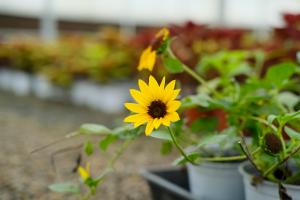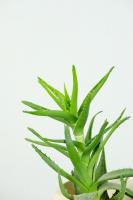Is Phytoplankton a Plant?
Phytoplankton are microscopic marine organisms that engage in photosynthesis to produce their own food. They play a vital role in the marine food web as they serve as a primary food source for many aquatic animals. However, even though they share similarities with plant life, are they classified as plants? That is a question that has intrigued many researchers and is worth exploring.
Phytoplankton Features and Characteristics
Phytoplankton are a diverse group of organisms with different shapes, sizes, and colors. They can be unicellular, multicellular, or colonial, and they are an essential component of the marine ecosystem. They carry out photosynthesis using chlorophyll, which is a pigmented molecule that captures light energy. They also contain accessory pigments that allow them to absorb different wavelengths of light, which gives them their unique colors. Their cell walls are made of silica, calcium carbonate, or cellulose, which helps them stay buoyant and float on the water surface. Additionally, they are highly responsive to changes in their environment, such as changes in temperature, light, nutrient availability, and water acidity.
Phytoplankton vs. Plants
Although phytoplankton has many characteristics similar to plants, there are fundamental differences between them. Plants are visible to the naked eye, while phytoplankton are microscopic in size, making them difficult to see. Additionally, plants are classified as multicellular, while phytoplankton can be unicellular or multicellular. Plants are rooted to the ground, while phytoplankton are dispersed throughout the oceans, seas, and freshwater bodies, making them a crucial element in the aquatic food web. Lastly, plants have roots, stems, and leaves, whereas phytoplankton have none of these structures.
Classification of Phytoplankton
Phytoplankton are classified into different groups based on their size, color, and the type of pigments they have. There are two primary types of pigments: chlorophylls and accessory pigments. Chlorophylls are green-colored pigments found in almost all photosynthetic organisms, while accessory pigments include carotenoids, phycobiliproteins, and xanthophylls. These pigments give phytoplankton their unique colors, which range from green to red, brown, or even blue. The different types of phytoplankton include diatoms, dinoflagellates, coccolithophores, and cyanobacteria, among others.
Importance of Phytoplankton
Phytoplankton plays a critical role in the aquatic food web as they serve as the primary food source for many organisms. They also release oxygen into the water through photosynthesis, which is essential for the survival of aquatic animals. Additionally, they absorb carbon dioxide from the atmosphere, helping to regulate the planet's climate. Moreover, they produce organic matter, which sinks to the ocean's bottom, and forms the base of the marine sediment. This organic matter can either be consumed by marine organisms or fossilize and become oil and gas reserves.
Conclusion
In conclusion, phytoplankton are microscopic marine organisms that are not classified as plants, but they share many similarities with them. They are critical components of the marine ecosystem, as they support the aquatic food web, regulate the planet's temperature, and provide organic matter that becomes an energy source for future generations. Protecting phytoplankton is crucial for the survival of many aquatic organisms and the earth's ecosystem.

 how many times do yo...
how many times do yo... how many planted tre...
how many planted tre... how many pine trees ...
how many pine trees ... how many pecan trees...
how many pecan trees... how many plants comp...
how many plants comp... how many plants can ...
how many plants can ... how many plants and ...
how many plants and ... how many pepper plan...
how many pepper plan...
































